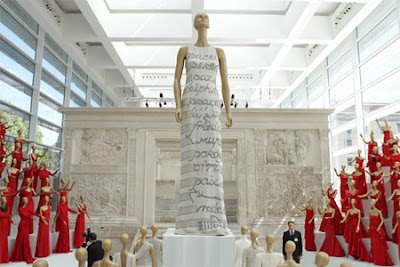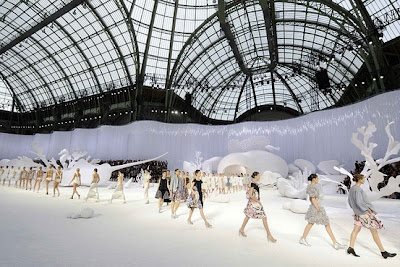Immediately considered the most interesting feat
of architecture of its time, Frank Gehry’s Guggenheim Museum in Bilbao has
celebrated 15 years of extraordinary success.
A competition led to the
choice of Californian architect Gehry, known for his use of unorthodox
materials and inventive forms, and his sensitivity to the urban environment.
Gehry’s proposal included features that embraced both the identity of the
Guggenheim Museum and the Basque Country. The building’s glass atrium refers to
the famous rotunda of Frank Lloyd Wright’s New York Guggenheim, and its largest
gallery is traversed by Bilbao’s Puente de La Salve, a vehicular bridge serving
as one of the main gateways to the city. In 1992 Juan Ignacio Vidarte, now
Director General of the Guggenheim Bilbao, was appointed to oversee the
development and construction of the project. Ground-breaking took place in 1993
and by 1997 a gala dinner and reception, attended by an international audience
and Spain’s Queen Sofia and King Juan Carlos I, celebrated the inauguration of
the Museum.
Before the Guggenheim
Museum Bilbao opened to the public in October, 1997, the new museum was making
news. A large number of artists, architects, journalists, politicians,
filmmakers, and historians visited the building site during the four years of
construction, anticipating the success of the museum. Frank Gehry’s limestone,
glass, and titanium building was hailed by architect Philip Johnson as “the
greatest building of our time” and the pioneering collaboration between the
Solomon R. Guggenheim Foundation and Basque authorities challenged ideas about
art museum collecting and programming.
Located on the Bay of Biscay, Bilbao is the fourth largest city in Spain, one of the country’s most important ports, and a centre for manufacturing, shipping, and commerce. In the late 1980s the Basque authorities embarked on an ambitious redevelopment program for the city. By 1991, with designs for an airport, a subway system, and a footbridge, among other important projects by major international architects, the city planned to build a first-class cultural facility. In April and May of 1991 at the invitation of the Basque Government and the Diputación Foral de Bizkaia, Thomas Krens, Director of the Solomon R. Guggenheim Foundation, met with officials, signing a preliminary agreement to build a new Guggenheim Museum in Bilbao.
Located on the Bay of Biscay, Bilbao is the fourth largest city in Spain, one of the country’s most important ports, and a centre for manufacturing, shipping, and commerce. In the late 1980s the Basque authorities embarked on an ambitious redevelopment program for the city. By 1991, with designs for an airport, a subway system, and a footbridge, among other important projects by major international architects, the city planned to build a first-class cultural facility. In April and May of 1991 at the invitation of the Basque Government and the Diputación Foral de Bizkaia, Thomas Krens, Director of the Solomon R. Guggenheim Foundation, met with officials, signing a preliminary agreement to build a new Guggenheim Museum in Bilbao.
Bilbao’s collection of art spans from the mid-twentieth century to the present day. Concentrated on post-war painting and sculpture in America and Europe, the collection is autonomous yet complements the Solomon R. Guggenheim Museum’s outstanding holdings of modern and contemporary art.
Under the Guggenheim Foundation, Bilbao has
acquired key works by some of the most significant artists of the second half
of the twentieth century, including Anselm Kiefer, Willem de Kooning, Robert
Motherwell, Sigmar Polke, Gerhard Richter, James Rosenquist, Clyfford Still, Cy
Twombly, and Andy Warhol. The acquisition of singular masterworks by leading
artists of our time allows the museum to present a series of influential high
points of modern and contemporary art. Major acquisitions include Joseph
Beuys’s Lightning with Stag in Its Glare (1958–85); Jeff Koons’s Puppy (1992),
now iconic in its position in the museum plaza; Mark Rothko’s Untitled
(1952–53); and Robert Rauschenberg’s Barge (1962–63), purchased jointly with
the museum in New York.













